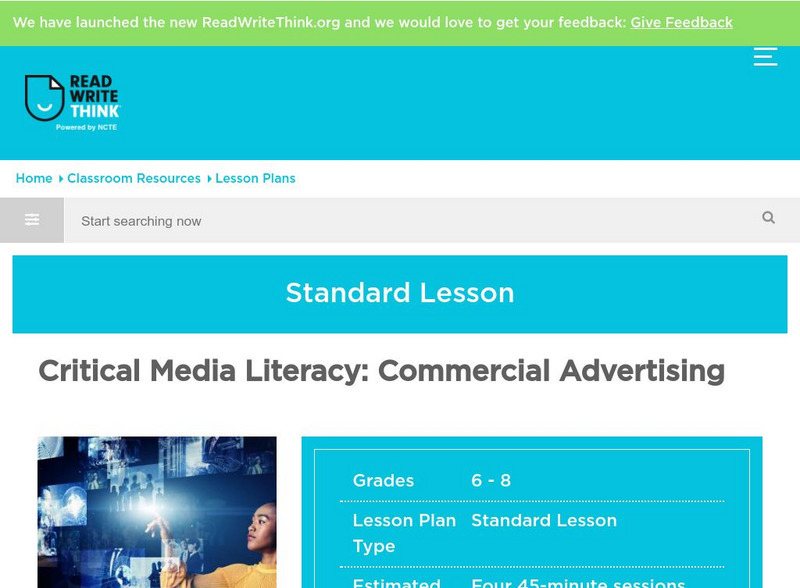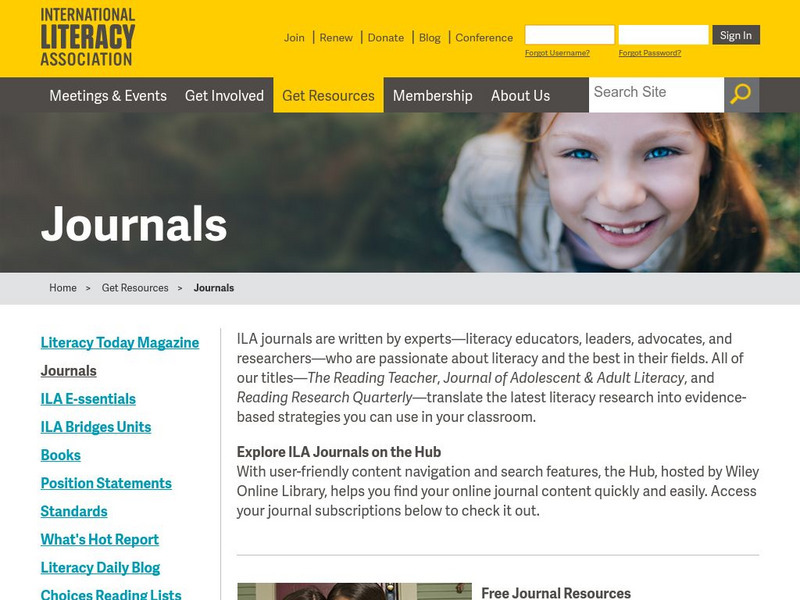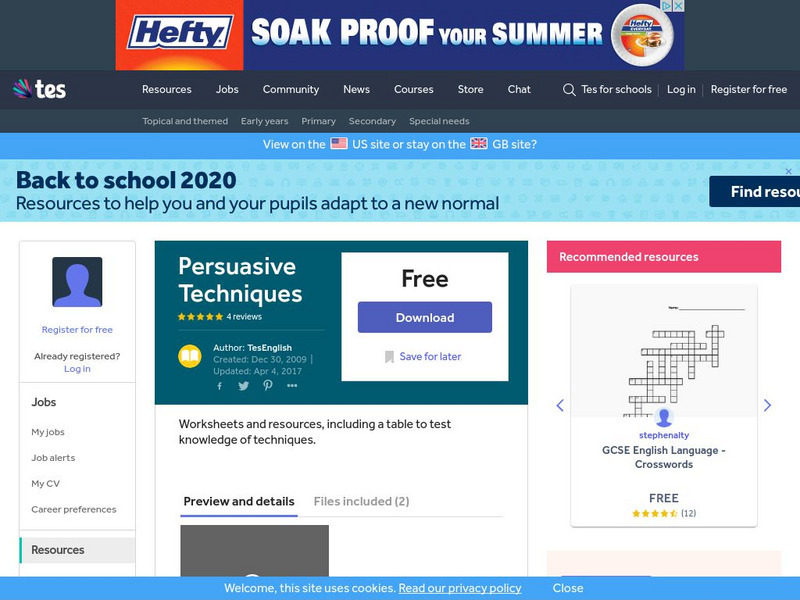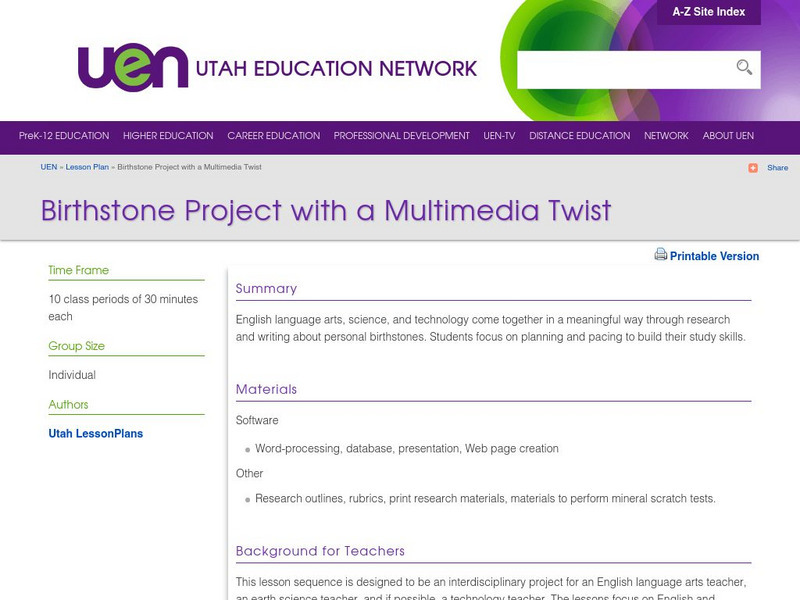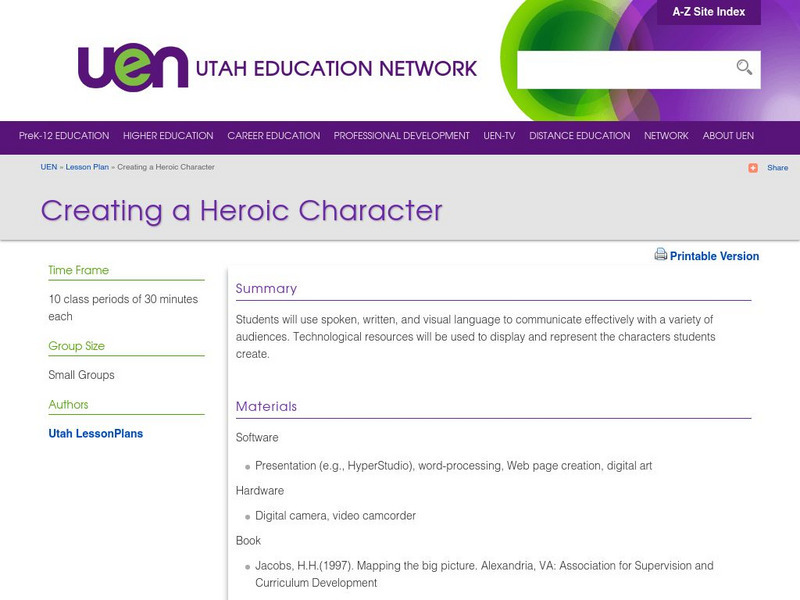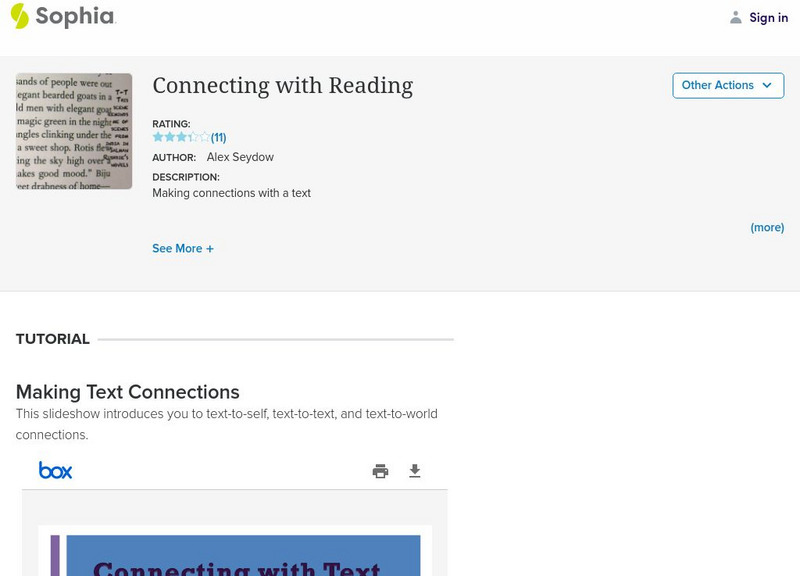Hi, what do you want to do?
FNO Press
The New "Home Work" Suggestions to Send Home
Information literacy can be practiced at home as well as at school. This article offers 12 suggestions for at home projects for parents and students to do together. Good for an open house handout.
AdLit
Ad lit.org: Classroom Strategies: Anticipation Guides
An Anticipation Guide is a strategy that is used before reading to activate students' prior knowledge and build curiosity about a new topic. Before reading a selection, students respond to several statements that challenge or support...
AdLit
Ad lit.org: Classroom Strategies: Power Notes
Power Notes is a strategy that teaches students an efficient form of organizing information from assigned text. This technique provides students a systematic way to look for relationships within material they are reading. Power Notes...
AdLit
Ad lit.org: Literacy Practices Interview
Literacy practices interviews are informal assessments that elicit information on students' reading and writing activities, including their free-time reading habits, their access to books, and their attitudes toward reading and writing....
AdLit
Ad lit.org: Using Technology to Support Struggling Students
Knowing how to engage in signature scientific acts, such as formulating questions and using evidence in arguments is an important part of science learning. This InfoBrief from the National Center for Technology Innovation offers more...
AdLit
Ad lit.org: Teaching Content Knowledge and Reading Strategies in Tandem
Many areas of instruction can have a rippling effect for the expansion of readers' repertoire of skills, including pre-reading, predicting, testing hypotheses against the text, asking questions, summarizing, etc. Literacy-rich,...
Writing Fix
Writing Fix: A Most Nutritious Election
In this lesson students will write a persuasive speech for the Fruit or Vegetable of the Year Award. Nutrition information should be incorporated into this cross-curricular lesson.
Polk Brothers Foundation Center for Urban Education at DePaul University
De Paul University: Center for Urban Education: Read to Learn, Share What You Learn [Pdf]
Several tips for reading to learn are provided on this page. Students will explore the BIG idea presented in a nonfiction piece.
Polk Brothers Foundation Center for Urban Education at DePaul University
Depaul University: Center for Urban Education: I Can Compare and Contrast [Pdf]
This resource is a poster that includes cues that will help students compare and contrast information. These questions can be applied to fiction and nonfiction passages.
Other
Appalachian State Univ.: Journal Reprint: Internet and Blog Publishing [Pdf]
Information, ideas, and examples of how technology can be used in a Social Studies classroom. Although designed for a fourth-grade classroom, many ideas in this article are applicable and adaptable for various grade levels and other...
Other
Increased Comprehension With the Use of Imagery
Designed for adult learners, this literacy lesson plan could easily be used in the high school or middle school classroom. Some handouts are included, but some material must be found in a newspaper or magazine.
Polk Brothers Foundation Center for Urban Education at DePaul University
De Paul University: Center for Urban Education: Compare Info in a Video and an Article [Pdf]
This Center for Urban Education resource provides a downloadable graphic organizer designed for comparing a video and an article about the same topic.
ReadWriteThink
Read Write Think: Persuasion Rubric
A printable four-point rubric to use when assessing a persuasive piece with a focus on organization, a goal or thesis, reasons/support, audience, word choice, visuals/delivery, and grammar/usage/mechanics. Directions on how to use this...
ReadWriteThink
Read Write Think: Get the Gist: A Summarizing Strategy for Any Content Area
A five-part standards-based lesson in which students learn to write a 20 word summary of an informational text by focusing on answering the questions who, what, when, where, why, and how. This strategy can be applied to any content area,...
ReadWriteThink
Read Write Think: Critical Media Literacy: Commercial Advertising
In this instructional activity, students will examine mass media critically and become aware of how much advertising is around them. They will realize the impact media has on social equality, what people buy, and on culture.
International Reading Association
Reading Online: Content Area Literacy Lessons Go High Tech
Research and ideas about the use of technology to aid in reaching content area literacy goals.
Austin Independent School District
Austin Independent School District: Common Persuasive Techniques [Pdf]
View a slide presentation explaining what persuasive techniques are and why they are used. Then learn about six different persuasive techniques used in advertising and see examples of advertisements utilizing some of the techniques....
E Reading Worksheets
E Reading Worksheets: Fact and Opinion Lessons
In this learning module, students will learn more about the differences between facts and opinions. A PowerPoint presentation and related activity are provided to reinforce the topic of facts vs. opinions. This module is designed to...
TES Global
Tes: Persuasive Techniques
[Free Registration/Login Required] A graphic organizer is provided to help students analyze persuasuve techniques in an advertisement. Students will analyze an advertisement and apply their understanding of the content.
Utah Education Network
Uen: Iste Nets: Birthstone Project With a Multimedia Twist
This interdisciplinary project on birthstones, provided by the International Society for Technology in Education (ISTE), focuses on research skills, writing skills, and the ability to put together an electronic presentation.
Utah Education Network
Uen: Iste Nets: Creating a Heroic Character (Lesson Plan)
This lesson sequence, provided by the International Society for Technology in Education (ISTE), encourages students to develop a fully realized heroic character and then, through the use of multimedia software, communicate that hero's...
Sophia Learning
Sophia: Comparing and Contrasting Texts
Two PowerPoint presentations and a video [2:57] on comparing and contrasting literary and informational texts as well as how to write a literary analysis. Includes links to external resources.
Sophia Learning
Sophia: Connecting With Reading
A brief slideshow that identifies and defines the ways that readers can make connections while reading a text (Text to Self, Text to Text and Text to World) and instructions about annotating while reading. Includes a worksheet that...
Sophia Learning
Sophia: Determining Your Audience
On this website you will find information, two presentations, and a practice worksheet explaining how to decide the audience of a written piece and how to appeal to an intended or general audience in an original text....





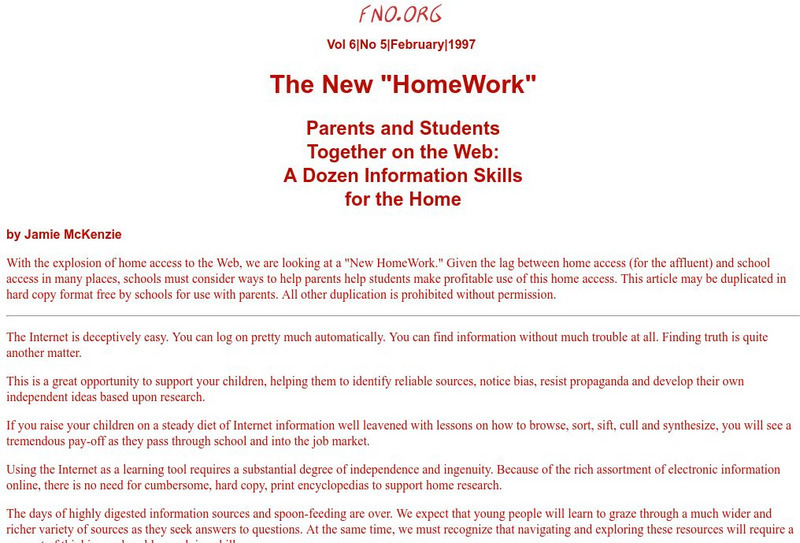
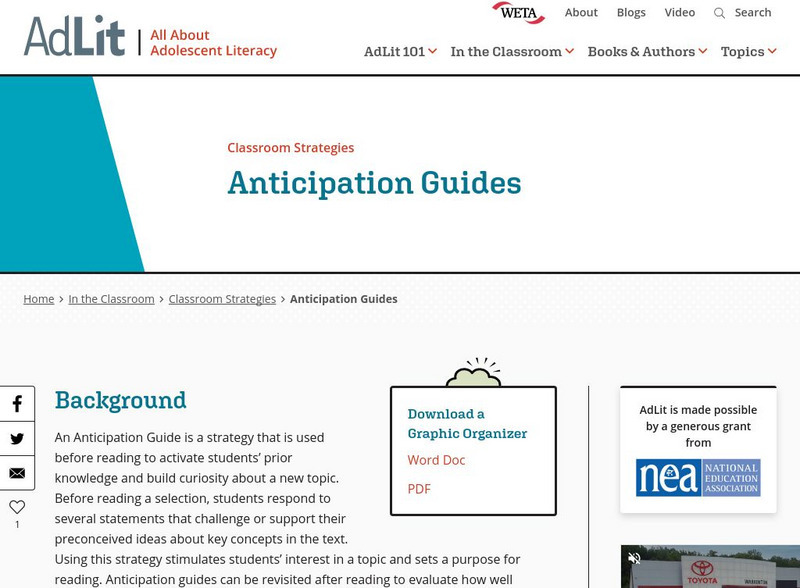


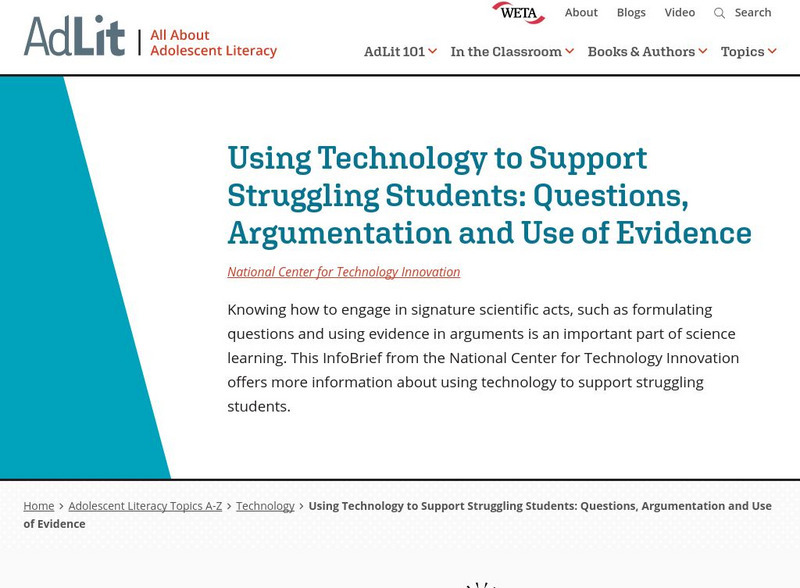
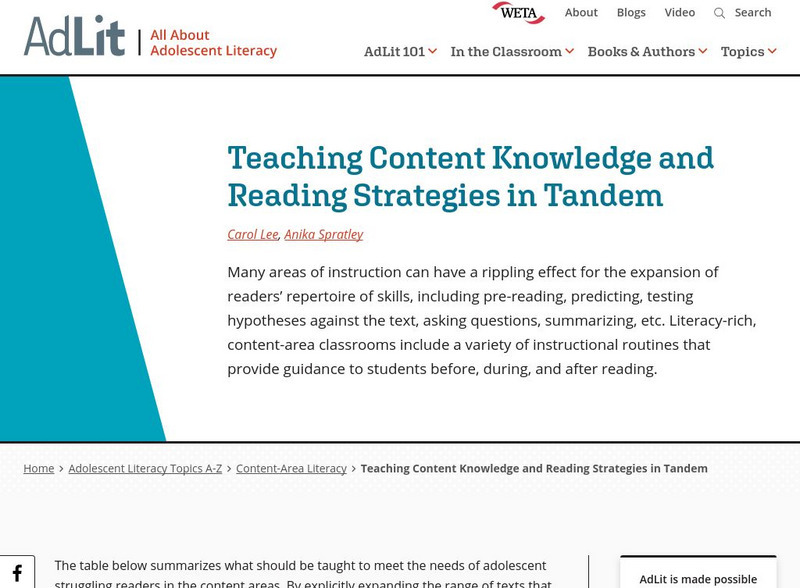
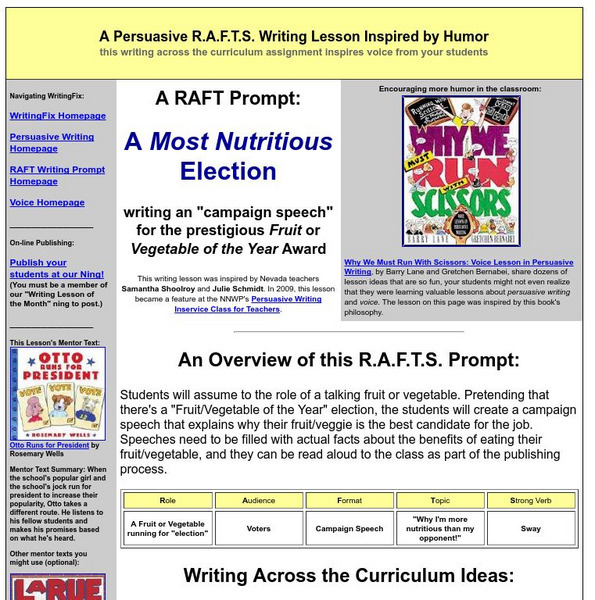
![De Paul University: Center for Urban Education: Read to Learn, Share What You Learn [Pdf] Graphic De Paul University: Center for Urban Education: Read to Learn, Share What You Learn [Pdf] Graphic](https://static.lp.lexp.cloud/images/attachment_defaults/resource/large/FPO-knovation.png)



